The 9 Layers of a Roof System
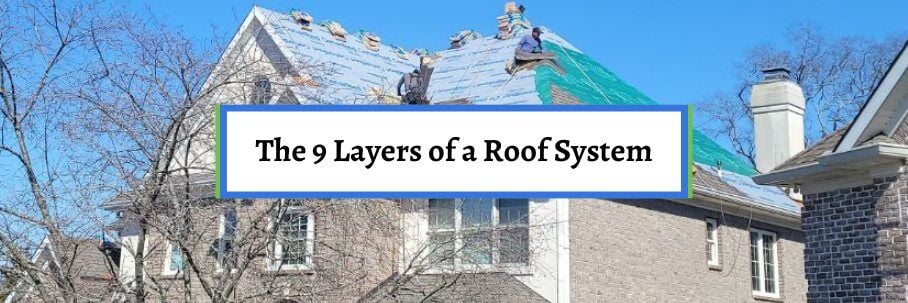
Do you need a roof replacement but don’t know what gets replaced? Are you wondering how many layers a roof actually has?
As you’re walking down the street and looking up at roofs, you only see the top layer. However, a roof system is a combination of different layers that fit together like puzzle pieces.
And when getting an estimate the last thing you want is to be surprised by all the different materials (layers) you’ll pay for when getting a new roof.
For over 30 years, Bill Ragan Roofing has helped homeowners understand everything that goes into their roofing project. So, let’s break down the layers of a roof system.
By the end of this article, you’ll know all the layers of a roof system, what they do, and why they’re important.
1. Roof decking
Roof decking (also called roof sheathing) is the first layer of a roof made of wooden boards (plywood or planks). Think of it as the foundation of your roof system because all the components and materials are installed directly on it.
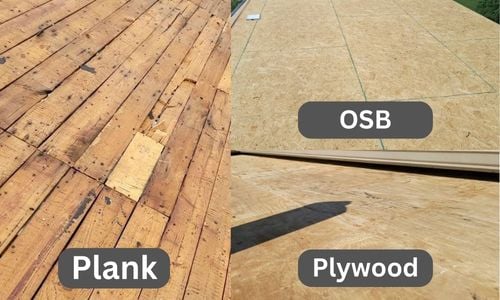
Decking can be one of two types: plank and sheet. Plank decking is made up of slender rectangular boards (1x6 or 1x8), while sheet decking (OSB or plywood) is flat sheets of wood that cover much more surface area.
You’ll still see both on roofs, but sheet decking is used much more today. But no matter the type, it must be structurally sound before installing a new roof.
2. Drip edge
Drip edge is metal flashing installed on the eaves and rakes to prevent water from getting under the main roofing material at the roof’s edges and going behind your gutters. Without it, the fascia board and roof decking edges will rot from prolonged exposure to water.
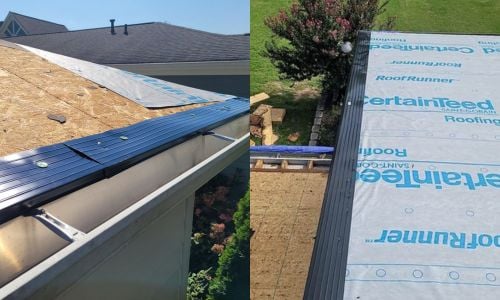
Drip edge is also now required per building codes and must be installed correctly. If it’s left off or improperly installed, your home could fail an inspection if the inspector is having a bad day.
Unfortunately, there are too many roofs without drip edge. This can be due to laziness or lack of experience, but some roofers purposefully exclude it from an estimate to lower their prices.
3. Underlayment
Roof underlayment is a layer of felt or synthetic material installed directly over the entirety of the roof deck. This layer protects the decking if water gets underneath the main roofing material.
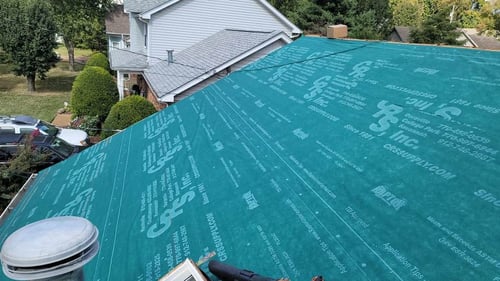
There are two types of underlayment: felt and synthetic. Felt underlayment comes in 15 lb and 30 lb rolls, but they absorb water when exposed.
On the other hand, synthetic underlayment is woven/spun polyethylene or polypropylene that wicks water instead of holding it. It’s newer to the industry but more durable, holds nails better, is easier to work with, and repels water much better than felt underlayment.
Synthetic underlayment is more expensive, but I recommend spending the extra money for the functionality and water-repelling abilities.
4. Ice and water shield
Like underlayment, ice and water shield is a layer of waterproof membrane that protects your roof decking from water if it gets under the roofing material. But instead of installing it over the entire roof, it’s installed on/around problem areas prone to leaks that need more protection.

Ice and water shield is mainly installed in roof valleys, around penetrations, against walls, and on roof pitches below a 4/12. It does add more to a new roof’s price, but the extra protection is well worth the peace of mind.
Just know that certain areas above the snowline in the US require two rows along the edges of your roof per building codes to prevent frequent ice dam leaks. However, this is considered an upgrade in places like our service area in Middle Tennessee.
5. Starter shingles
Starter shingles are a layer of pre-cut roofing material installed along a roof’s edges before shingles are installed. This ensures there’s something between the joints of the first row of shingles where they butt against each other.

Starter shingles also have an adhesive that seals the shingles at your roof’s edges (rakes and eaves). This seal improves your roof’s resistance to strong winds and determines the wind warranty provided by the manufacturer.
Just know this is specific to asphalt shingles, but every roofing material has some kind of starter material for the roof’s edges.
6. The main roofing material
Your roofing material is the top layer that makes up the bulk of the roof system. This is the layer you can actually see, which is why it’s usually what homeowners think of when they see a roof.
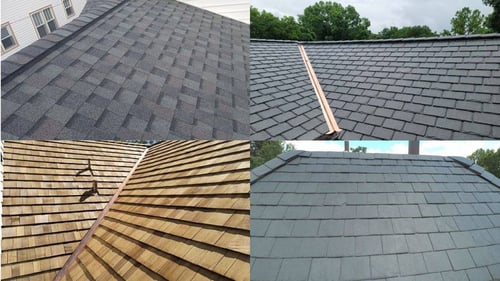
Architectural shingles are the most commonly used material in the United States, but there are plenty of roofing material options. These include metal roofing, cedar shake roofing, synthetic shingles, and slate roofing.
Keep in mind the one you choose determines your new roof's cost, aesthetic, lifespan, and warranty options. So, do the research and pick the right one for your budget.
7. Roof flashing
Roof flashing is a metal material used to prevent water from getting behind or under areas (walls, chimneys, roof valleys, penetrations, etc.) where the roofing material butts up against something. It’s one of the most important components, and your roof will have significant leaks without it.
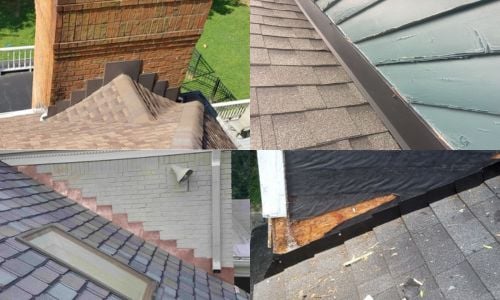
It can be made out of any metal type, most commonly aluminum, steel, or copper. However, prefinished aluminum is the most popular choice for residential roofing because of its affordability.
Just know roof flashing can outlive the other components, so it’s possible to reuse it if it’s installed correctly and the metal is in good shape. However, it must be replaced if the integrity is compromised when getting a new roof or the roofer isn’t happy with the installation.
8. Ridge capping
Ridge capping is a layer of material installed where two roof slopes meet to seal a roof system at the very top. It’ll be made of the same material as the main roofing material but can be bent easily or already pre-bent to form perfectly on a roof’s ridge.
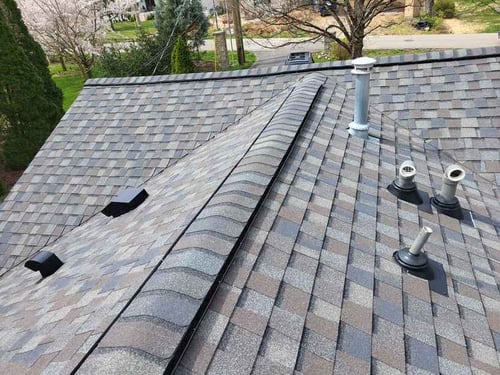
No matter the roofing material you choose, every roof needs capping on the ridges to prevent leaks. However, some roofers avoid using proper ridge capping to bring prices down.
It’s especially common for asphalt shingles, with some roofers cutting and using 3-tab shingles instead of a manufacturer's ridge capping on an architectural shingle roof. This may keep costs down, but it will lead to problems because they’re not meant to be bent and used this way.
9. Roof vents
Roof vents are penetrations that sit on top of the main roofing material. They pull in fresh air through intake vents and push trapped air through exhaust vents to ensure your attic is ventilated properly.
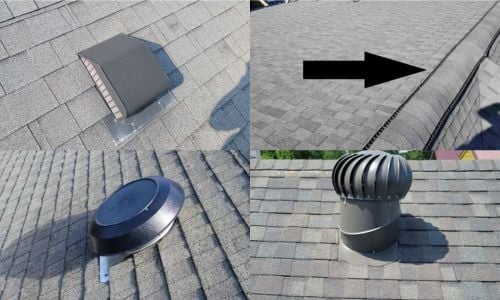
While ventilation isn’t necessarily a layer, it’s crucial enough to mention here. There are a variety of roof vents, but the ventilation system (active or passive) determines the exact options.
The popular choices for an active ventilation system are turbine vents, power vents, ridge vents with a baffle, or solar-powered vents. For a passive ventilation system, the most common types are static vents (box vents), ridge vents without a baffle, or a gable-end vent.
Just know that certain vents are better for certain situations, so discuss the options with your roofing contractor more. With that in mind, I always recommend an active vent and ventilation system for functionality.
What else do you need to know before getting a new roof?
After reading this article, you know the 8 layers of a roof. Now, you have a better understanding of what you’ll pay for when getting a replacement.
Your roof will have problems if just one layer is missing, so make sure every estimate has a line item for each material and component. This will help you avoid being taken advantage of and ensure you get a quality roof.
However, this isn’t the only information you need. In fact, knowing the layers of a roof is just the beginning.
It’s important to go into the roof replacement process as prepared as possible with the right mindset. That’s why I wrote another article to help you do just that.
Check out 7 Things to Consider Before a Roof Replacement to learn what homeowners should consider and do before getting a new roof.


